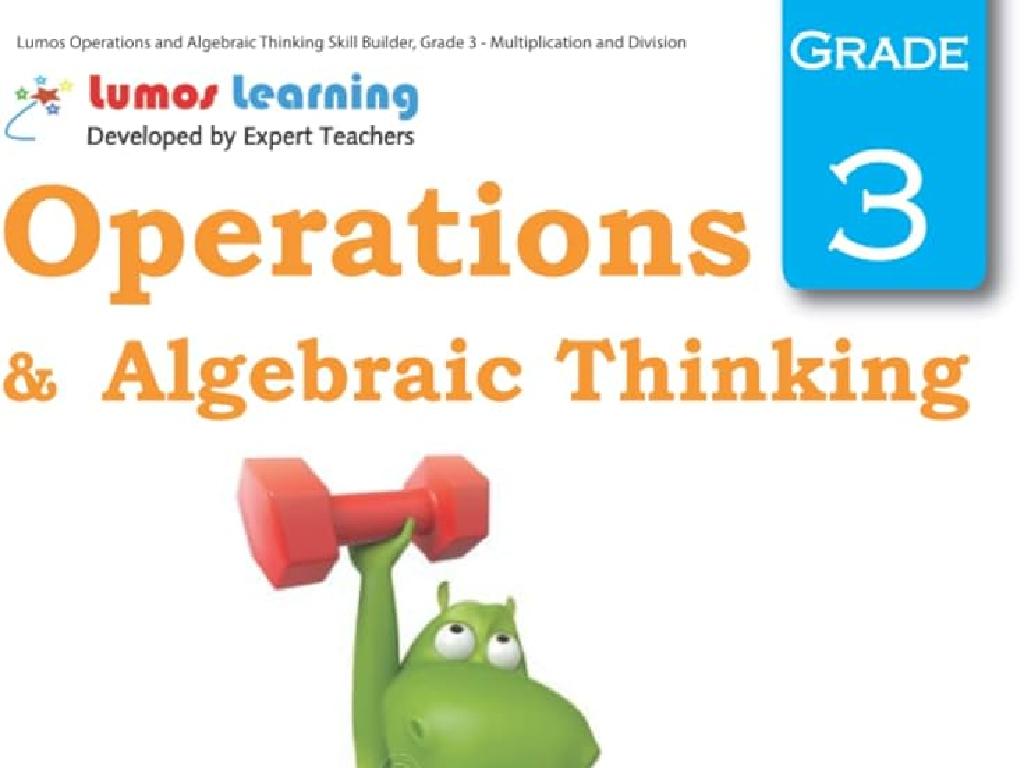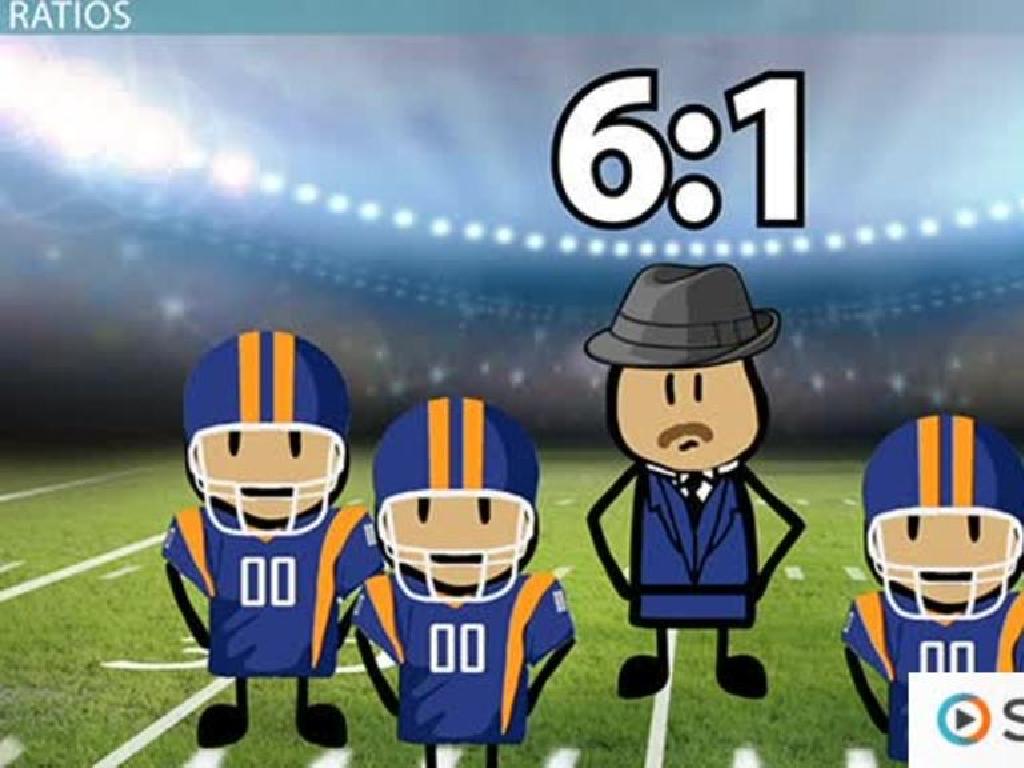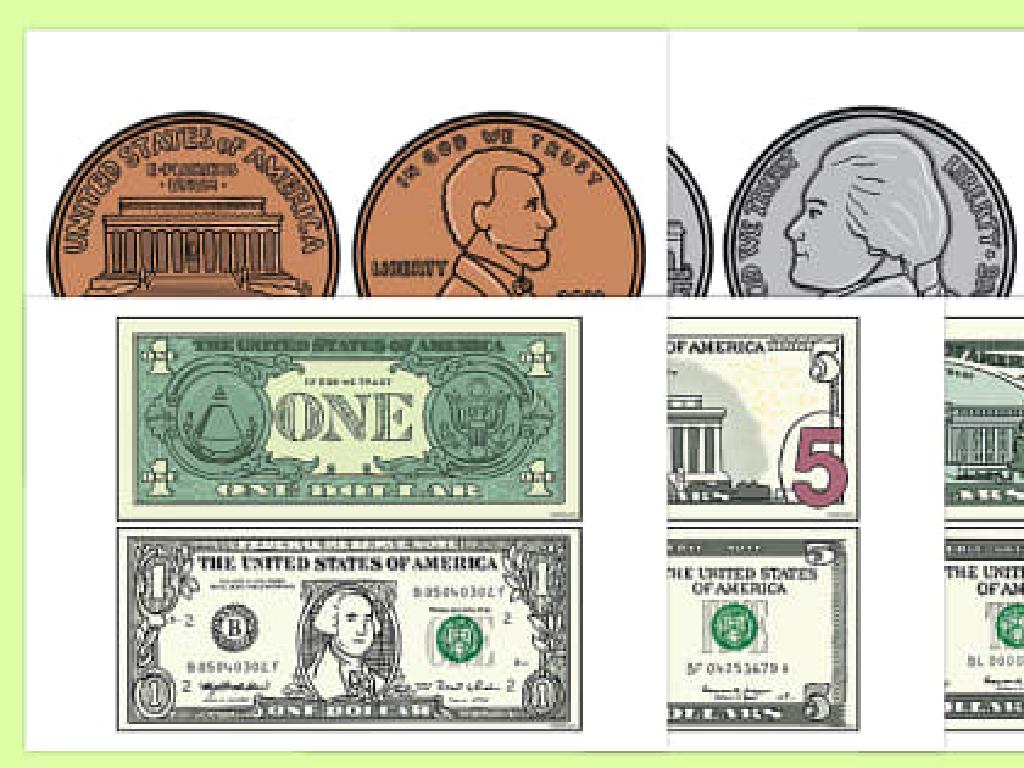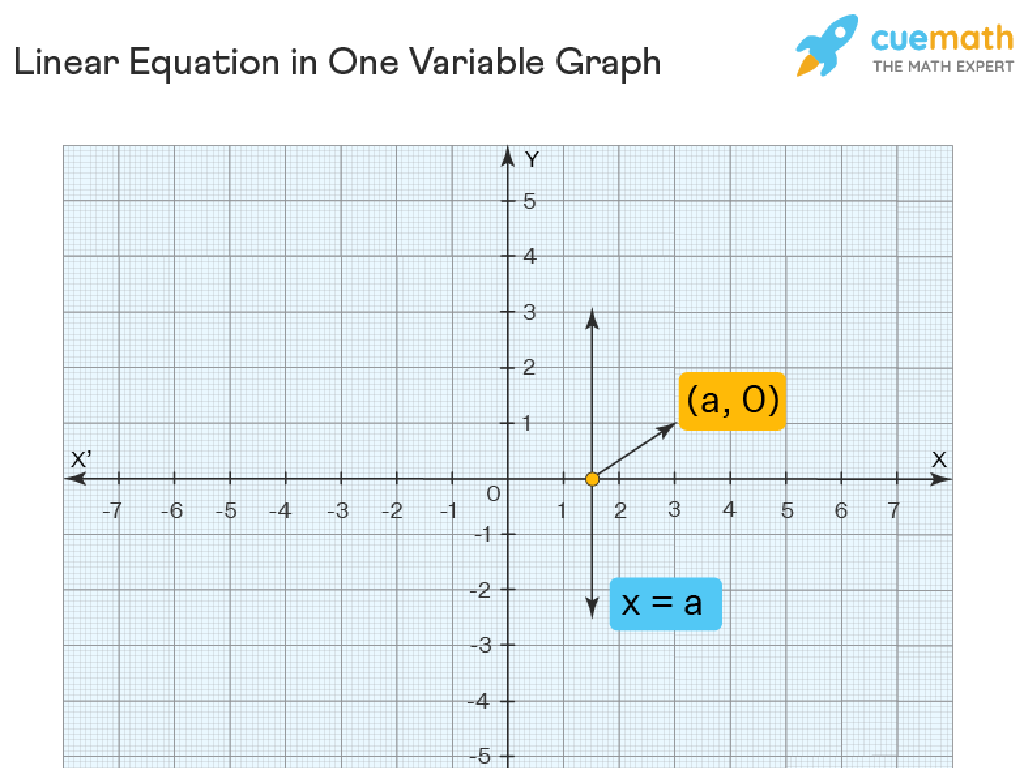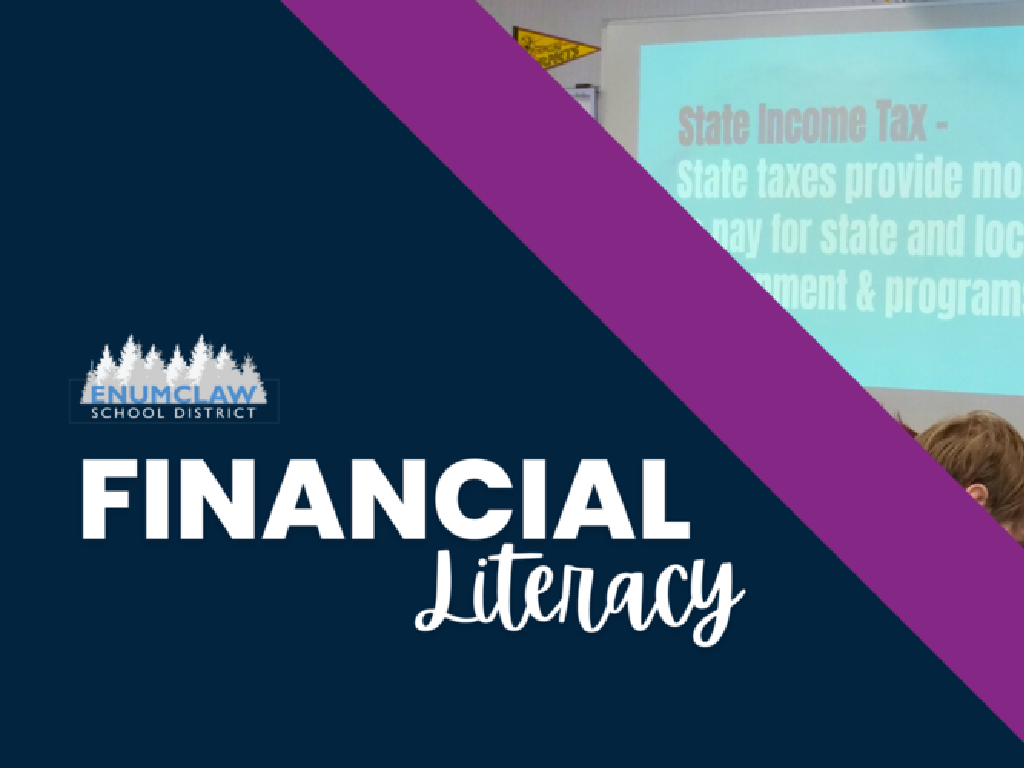Addition Word Problems - One-Digit Plus Two-Digit Numbers
Subject: Math
Grade: First grade
Topic: Addition: Two Digits
Please LOG IN to download the presentation. Access is available to registered users only.
View More Content
Welcome to Addition!
– Greetings First Graders!
– Learn to add numbers together
– We’ll add small and bigger numbers
– Solve fun number puzzles
– Use pictures and stories for puzzles
– Adding one-digit to two-digit numbers
– Practice with examples like 2 + 15
|
This slide is an introduction to the concept of addition for first graders. It’s designed to create excitement about learning how to combine numbers to find a total. Emphasize that addition is like putting things together to have more. Use visual aids like number lines or counters to help them understand. Incorporate storytelling into the puzzles to make the activity engaging. For example, ‘If you have 2 apples and you get 15 more from a friend, how many apples do you have now?’ This approach helps students visualize the problem and apply addition to real-life situations. Encourage participation and praise their efforts to build confidence.
Understanding Addition
– Addition combines numbers
– When we add 2 and 3, we combine them to make 5
– Like adding apples in a basket
– Imagine you have 3 apples and you get 2 more, now you have 5 apples!
– Counting total items together
– Key concept in math
|
This slide introduces the basic concept of addition to first graders. Start by explaining that addition is simply combining two or more numbers to find out the total amount. Use tangible examples like adding apples to a basket because visualizing the concept can help young students grasp it more easily. Demonstrate with actual objects if possible. Emphasize that addition is a fundamental skill in math that they will use in many different situations. Encourage the students to think of other examples where they might add things together in their daily lives.
Understanding Our Numbers
– Review numbers 0 to 9
– Counting from zero to nine helps us understand the basics.
– Building blocks of big numbers
– Every big number is made up of these small numbers.
– Practice adding small numbers
– Let’s add numbers like 2 + 3 to practice.
– Learn to add with bigger numbers
– Soon we’ll add numbers like 2 + 15!
|
This slide is aimed at reinforcing the understanding of numbers 0 to 9 for first graders, emphasizing that these single-digit numbers are the foundation for creating larger numbers. Start by having the students recite the numbers from 0 to 9. Then, explain how larger numbers are formed by combining these smaller ‘building block’ numbers. Engage the class in a few simple addition problems using only single-digit numbers to solidify their understanding. Finally, introduce the concept of adding a single-digit number to a two-digit number, preparing them for the next step in learning addition. Use visual aids like number lines or counters to help students visualize the addition process.
Adding Small and Big Numbers Together
– One-digit numbers: 0 to 9
– Two-digit numbers: start at 10
– Like 10, which has a ‘1’ in the tens place and a ‘0’ in the ones place
– How to add small and big numbers
– Stack numbers and add ones first, then tens
– Practice with examples
– Example: 7 + 15. Add 7 to 5 first, then add the 1 ten
|
This slide introduces first graders to the concept of addition involving one-digit and two-digit numbers. Begin by explaining what one-digit numbers are, using examples and visual aids if possible. Then, move on to two-digit numbers, emphasizing the new tens place. Show students how to properly align numbers by place value when adding them together, starting with the ones place and then moving to the tens. Use simple examples to demonstrate this process, and encourage students to practice with similar problems. Provide guidance on carrying over if the ones place adds up to more than 9. The goal is for students to feel comfortable with the concept of adding different sized numbers.
Let’s Add: One-Digit Plus Two-Digit Numbers
– Combining a one-digit with a two-digit
– Like adding 2 (one-digit) to 15 (two-digit) to make 17
– Start with the ones place
– Write the smaller number under the larger, ones under ones
– Line up the numbers vertically
– Make sure the digits are in the right place before adding
– Add the numbers together
– If the ones add up to 10 or more, carry over to the tens place
|
This slide introduces the concept of adding a one-digit number to a two-digit number. Start by explaining that when we combine two numbers, we create a new number. Use simple examples like 1 + 12 to illustrate this point. Teach the students to always begin adding with the ones place and to line up the numbers by place value. Emphasize the importance of vertical alignment for clarity. Demonstrate the process of carrying over when the sum of the ones place is 10 or more. Provide several examples and encourage students to practice with different combinations of numbers. This foundational skill will help them with more complex addition in the future.
Solving Word Problems: Adding Small and Big Numbers
– Word problems are number stories
– Read carefully to find numbers
– Find the one-digit and two-digit numbers in the story
– Discover what to add together
– Look for clues like ‘in all’, ‘together’, or ‘total’
– Practice with an example problem
– Example: Tom has 2 apples, his mom gives him 14 more. How many does he have now?
|
This slide introduces first graders to the concept of addition word problems involving one-digit and two-digit numbers. Emphasize that word problems are like stories that involve numbers and require careful reading to identify the numerical information. Teach students to look for key words that signal addition and guide them through an example problem. For instance, in the example provided, students should identify ‘2’ and ’14’ as the numbers to add and ‘now’ as an indicator of the total amount. Encourage students to visualize the problem with objects or drawings to aid their understanding. During class, work through several problems together and then allow students to try their own, offering support as needed.
Adding Ducks in Ponds
– Count ducks in the first pond
– There are 7 ducks swimming.
– Count ducks in the second pond
– Another pond has 10 ducks.
– Add both groups of ducks together
– 7 ducks plus 10 ducks is?
– Find the total number of ducks
– Add the two numbers for the total.
|
This slide introduces students to addition word problems involving one-digit and two-digit numbers. Start by reading the problem aloud and asking students to visualize the two ponds with ducks. Have them count the ducks in the first pond (7) and then in the second pond (10). Guide them through the process of adding the two groups together by using manipulatives like counters or drawing pictures. Reinforce the concept that addition is about combining groups to find out ‘how many in total’. After solving the problem, encourage students to come up with similar word problems involving their favorite animals or objects to further practice addition.
Solving Addition Word Problems
– Start with one-digit number (7)
– Add a two-digit number (10)
– Combine both numbers together
– 7 ducks join 10 ducks, how many now?
– Find the total number of ducks
– Counting all ducks gives us 17 ducks
|
This slide is aimed at helping first graders understand how to solve addition word problems involving one-digit and two-digit numbers. Start by presenting the problem in a story format, such as 7 ducks joining 10 ducks at a pond. This visual and narrative approach makes it relatable and easier to grasp. Encourage the students to visualize the ducks coming together and then count all the ducks to find the total. Reinforce the concept that addition is combining two groups into one larger group. Use physical props like toy ducks or illustrations if possible to make the activity engaging. After explaining, ask the students to solve similar problems with different numbers and objects to ensure they’ve understood the concept.
Practice Time: Solving Word Problems
– Try solving a word problem
– Find the numbers in the story
– Look for clues like ‘altogether’, ‘in total’, ‘combined’
– Add one-digit and two-digit numbers
– Example: 5 (one-digit) + 12 (two-digit) = 17
– Show your work step by step
– Write down the numbers and add them up
|
This slide is designed to engage students in practicing addition word problems. Encourage them to identify the numbers within the context of the story and understand the action taking place, such as combining or adding together. Remind them to look for key phrases that indicate addition. Provide guidance on how to neatly organize their work and demonstrate the process of adding a one-digit number to a two-digit number. For example, if the story says ‘Tom has 5 apples, and his mom gives him 12 more,’ students should write down ‘5 + 12’ and calculate the sum. During the activity, circulate around the room to offer help and ensure students are correctly identifying numbers and performing the addition.
Class Activity: Addition Scavenger Hunt
– Let’s explore the classroom!
– Find objects with numbers
– Look for books, blocks, or anything numbered
– Add the numbers together
– Use your addition skills on the numbers you find
– Solve in pairs
– Team up and help each other with the math
|
This activity is designed to make learning addition interactive and fun. Set up the classroom with various objects that have numbers on them, such as numbered blocks, books with page numbers, or flashcards. Encourage the students to walk around the classroom and find these objects. Once they find an object, they should note down the number and find another object to add the first number to. They will work in pairs to encourage teamwork and peer learning. As they solve the problems, they can write down their answers or share them with the class. Possible variations of the activity could include finding specific sums, using different objects for different number ranges, or timing the activity for a fun challenge.

